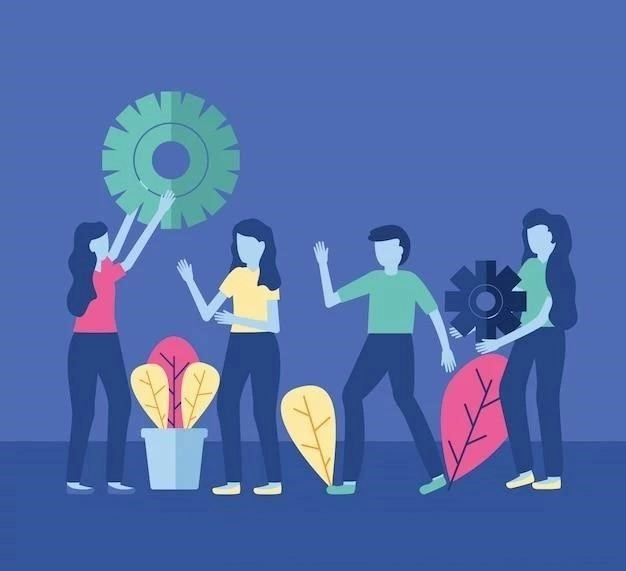Creativity, the ability to generate novel and valuable ideas, is a fundamental human capacity that drives innovation and progress in every field. But what makes some people more creative than others? This article delves into the science of creativity, exploring the cognitive, conative, and environmental factors that contribute to innovative thinking.
Cognitive Factors: The Building Blocks of Creativity
At its core, creativity relies on a foundation of cognitive abilities. These include:
- Divergent Thinking: The ability to generate multiple solutions to a problem, thinking outside the box and exploring a wide range of possibilities. This contrasts with convergent thinking, which focuses on finding a single, correct answer.
- Cognitive Flexibility: The capacity to shift perspectives, adapt to new information, and see connections between seemingly disparate concepts. This mental agility allows for the recombination of existing knowledge in unique ways.
- Working Memory: The ability to hold and manipulate information in mind, essential for juggling multiple ideas and perspectives during the creative process. A robust working memory allows for the simultaneous consideration of various elements while constructing novel solutions.
- Associative Thinking: The ability to make connections between seemingly unrelated ideas or concepts. This ability fosters the discovery of hidden relationships and the generation of original metaphors and analogies.

Conative Factors: The Fuel of the Creative Fire
While cognitive abilities provide the tools, conative factors provide the motivation and drive to utilize them. These include:
- Intrinsic Motivation: A passion for the task itself, driven by curiosity, interest, and a desire to explore. When intrinsically motivated, individuals are more likely to persevere through challenges and pursue creative endeavors for the sheer joy of the process.
- Openness to Experience: A personality trait characterized by receptivity to new ideas, experiences, and perspectives. Individuals high in openness are more likely to embrace novelty, challenge conventional thinking, and explore uncharted territories.
- Tolerance for Ambiguity: The ability to comfortably navigate uncertainty and complexity, embracing the unknown rather than shying away from it. This trait allows individuals to delve into the messy and often unstructured process of creative exploration.
- Growth Mindset: The belief that abilities and intelligence are not fixed but can be developed through effort and learning. This mindset encourages individuals to embrace challenges, persist through setbacks, and view failures as opportunities for growth.
Environmental Factors: Cultivating a Fertile Ground for Creativity
Creativity doesnt occur in a vacuum. The environment plays a crucial role in fostering or hindering innovative thinking. Key environmental influences include:
- Psychological Safety: A climate where individuals feel comfortable expressing their ideas without fear of criticism or judgment. This safety fosters risk-taking and encourages the exploration of unconventional ideas.
- Diversity of Thought: Exposure to different perspectives, backgrounds, and experiences. This diversity challenges assumptions, sparks new connections, and fuels creative problem-solving.
- Challenging and Stimulating Environments: Contexts that provide opportunities for learning, growth, and the application of creativity to real-world problems. Environments that encourage experimentation and provide autonomy can ignite creative sparks.
- Access to Resources: Availability of tools, information, and support systems that facilitate the creative process. This can include access to technology, mentorship, and networks of like-minded individuals.
The Interplay of Factors: A Symphony of Creativity
Its important to note that these factors dont operate in isolation. Creativity emerges from the complex interplay of cognitive abilities, conative dispositions, and environmental influences. For example, an individual with high cognitive flexibility may not reach their creative potential in a stifling environment that punishes risk-taking. Similarly, a highly motivated individual may struggle to innovate without the cognitive tools or supportive environment to bring their ideas to fruition.

Nurturing Creativity: A Lifelong Pursuit
Understanding the science of creativity empowers us to foster it in ourselves and others. By cultivating cognitive skills, nurturing conative dispositions, and creating conducive environments, we can unlock the innovative potential that resides within each of us.

Further Exploration: Delving Deeper into the Creative Mind
The study of creativity is a rich and ongoing field of research. Here are some areas for further exploration:
- Neuroscience of Creativity: Investigating the brain regions and networks involved in creative thought, shedding light on the neural mechanisms underlying innovation.
- The Role of Unconscious Processes: Exploring how incubation, intuition, and insights contribute to the creative process, understanding the role of the subconscious in generating novel ideas.
- Creativity Across the Lifespan: Examining how creativity manifests and evolves throughout different life stages, from childhood imagination to creative expression in later life.
- Enhancing Creativity: Developing and evaluating interventions and strategies to boost creative thinking skills, fostering innovation in educational, organizational, and personal contexts.
By continuing to explore the science of creativity, we can gain a deeper understanding of this essential human capacity and unlock its transformative power in all aspects of our lives.
Unlocking Human Potential: Applications and Future Directions
Understanding the interplay of these cognitive, conative, and environmental factors is crucial not only for understanding the origins of creativity but also for fostering it. This knowledge has profound implications for:
1. Educational Practices:
Cultivating creativity should be a cornerstone of education. By integrating strategies that promote divergent thinking, problem-solving, and a tolerance for ambiguity, educators can empower students to become innovative thinkers. This includes:
- Project-Based Learning: Engaging students in open-ended projects that require them to generate creative solutions to real-world problems.
- Inquiry-Based Learning: Encouraging students to ask questions, explore their curiosity, and drive their own learning process.
- Arts Integration: Incorporating arts into various subjects to foster creative expression, imagination, and out-of-the-box thinking.
2. Organizational Innovation:
In todays rapidly evolving landscape, organizations need to foster cultures of innovation to thrive. This requires creating environments that:
- Encourage Experimentation: Providing employees with the freedom and resources to experiment, take risks, and learn from failures.
- Promote Collaboration: Fostering cross-functional collaboration and knowledge sharing to generate diverse perspectives and spark new ideas.
- Value Employee Input: Creating channels for employees at all levels to share ideas and contribute to the innovation process.
3. Personal Growth and Well-being:
Cultivating creativity is not just about groundbreaking inventions or artistic masterpieces. Its about approaching life with a sense of curiosity, openness, and a willingness to explore new possibilities. Engaging in creative activities can:
- Enhance Problem-Solving Skills: Strengthening our ability to navigate challenges and find innovative solutions in everyday life.
- Boost Self-Expression: Providing outlets for self-discovery, personal growth, and the communication of unique perspectives.
- Increase Resilience: Equipping us with the flexibility and adaptability to thrive in the face of change and uncertainty.
4. Future Research Horizons:
The science of creativity is an ongoing journey of discovery. Future research can delve deeper into:
- The Impact of Technology: Investigating how technology influences creative processes, both as a tool for enhancing creativity and a potential factor shaping cognitive abilities.
- Cross-Cultural Perspectives: Exploring how cultural factors influence the definition, expression, and development of creativity across different societies.
- The Neuroscience of Creative Expertise: Examining the neural underpinnings of exceptional creativity in various domains, seeking insights into the development of expertise.
By embracing a multidisciplinary approach that integrates cognitive science, neuroscience, education, and organizational psychology, we can unlock the mysteries of the creative mind and harness its potential to shape a brighter and more innovative future.
Harnessing Creativity: Implications and Future Directions
Understanding the multifaceted nature of creativity, particularly the intricate interplay of cognitive, conative, and environmental factors, is not merely an academic pursuit. It holds profound implications for how we educate future generations, cultivate innovation within organizations, and foster personal fulfillment.
Transforming Education: Cultivating Creative Thinkers
Traditional educational models often prioritize rote memorization and standardized testing, potentially stifling creativity. A paradigm shift is necessary, one that places equal emphasis on fostering creative problem-solving, critical thinking, and adaptability. Key strategies include:
- Inquiry-Based Learning: Shifting away from passive learning, this approach empowers students to ask questions, conduct investigations, and construct their own understanding.
- Open-Ended Problem Solving: Presenting students with real-world challenges that have multiple solutions encourages them to think divergently and explore unconventional approaches.
- Interdisciplinary Learning: Breaking down traditional subject silos and encouraging the integration of diverse disciplines allows students to make connections and approach problems from multiple perspectives.
- Risk-Taking and Failure as Learning Opportunities: Creating a safe environment where students feel comfortable taking risks, experimenting, and learning from their mistakes is essential for fostering creative growth.
Fostering Innovation: Cultivating Organizational Creativity
In todays rapidly changing global landscape, organizations across all sectors must embrace innovation to thrive. This requires cultivating a culture that values and nurtures creativity at all levels. Key considerations include:
- Leadership that Champions Creativity: Leaders who actively encourage experimentation, tolerate ambiguity, and provide support for novel ideas set the tone for a creative organization.
- Cross-Functional Collaboration: Breaking down silos between departments and fostering communication and collaboration across disciplines can spark new ideas and innovative solutions.
- Resource Allocation for Innovation: Dedicating time, funding, and physical spaces specifically for creative exploration demonstrates a commitment to innovation.
- Reward Systems that Encourage Risk-Taking: Recognizing and rewarding employees for their creative contributions, even those that might not lead to immediate success, fosters a culture of experimentation.
Enhancing Well-being: Creativity for Personal Fulfillment
Beyond its impact on education and the workplace, fostering creativity is essential for personal growth and well-being. Engaging in creative activities, regardless of ones perceived talent or skill level, offers numerous benefits:
- Stress Reduction: Engaging in creative pursuits can provide an outlet for stress and emotional expression, promoting relaxation and mental well-being.
- Increased Self-Awareness: The creative process often involves introspection and self-reflection, leading to greater self-understanding and personal growth.
- Enhanced Problem-Solving Skills: The flexible and divergent thinking cultivated through creative activities can translate into more effective problem-solving in daily life.
- Increased Sense of Purpose: Expressing oneself creatively can foster a sense of purpose, accomplishment, and connection to something larger than oneself.
Future Directions: Expanding the Frontiers of Creativity Research
While significant strides have been made in understanding creativity, many intriguing questions remain. Future research should explore:
- The Impact of Emerging Technologies: How will advancements in artificial intelligence, virtual reality, and other technologies impact human creativity? Will they serve as tools for enhancement or potential disruptors?
- The Neurobiological Basis of Creativity: Further investigation into the neural mechanisms underlying creative thought, including the role of specific brain regions, networks, and neurotransmitters, is crucial.
- The Development of Creativity Across the Lifespan: Longitudinal studies are needed to understand how creativity manifests and evolves from childhood to adulthood, and how to best support its development at each stage.
- Cross-Cultural Perspectives on Creativity: Examining how creativity is defined, valued, and expressed in different cultures can provide a more nuanced and comprehensive understanding of this complex phenomenon.
By continuing to unravel the mysteries of the creative mind, we can unlock human potential, foster innovation across all sectors of society, and cultivate a world where creative expression flourishes.










